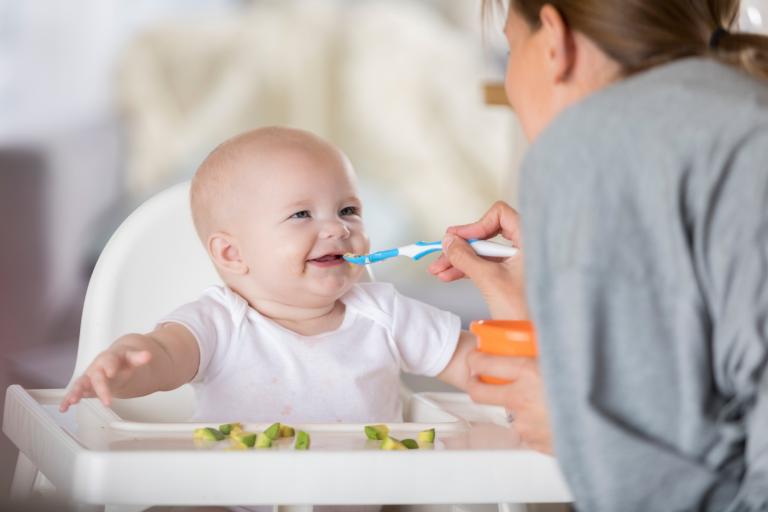Happy. Healthy. Southie.
Supportive and non-judgmental advice from SBCHC's health experts.
Starting Solids Primer: Part 1
By: Jocelyn Guggenheim
As a pediatric primary care provider one of the most common questions I get is: How do I know my baby is ready to start solids? And if they are ready, where do I start? This week we are starting a three part series we are calling the Starting Solids Primer to answer all of those questions.
Let’s begin with a few pointers that should help get any baby off on the right foot:
1. There is no one right age for every baby. The recommendation is for children to start solids between 4 and 6 months old. Why the range? Because children develop at different speeds and are ready at different times. Look for these three signs:
- The infant can sit with little to no support. If a baby can sit with the support of a high chair then they may be ready, but if they are too wobbly to sit without more help it’s best to wait as their muscles are likely not strong enough to handle eating solids.
- The infant is showing interest in people eating around them. Some babies at 4 months old are eyeing everything their parents eat and leaning forward to try to swipe a bite, while others may be 6 months old and just starting to notice people eating around them. Watch for interest in food as another sign babies are ready.
- The absence of the tongue thrust reflex. This reflex is present at birth and is something that goes away as babies near 6 months old. When this reflex is gone you will know because if you put food on the front of their tongue or in their mouth their tongue doesn’t automatically push it back out. Still not sure if this is gone on your baby? If they are sitting up with little support and look like they want to try solids go ahead and offer a small spoonful. If they swallow and lean forward for more they were ready, if they push it out and turn away it’s best to try again in a few days or weeks. As long as you don’t force-feed them and only offer safe foods it’s ok to try.
2. Early exposure to foods that cause allergies reduce the risk of a baby developing food allergies. Always check with your baby’s PCP but new research shows that unless a child is at high risk for a food allergy (this usually is because a close relative has an allergy and/or the baby has moderate to severe eczema) exposing infants to foods that are more likely to cause allergies earlier actually may help prevent the development of those allergies. And waiting may increase the chances those allergies will develop. No need to buy fancy baby food products to do this. Once you get the ok from your baby’s PCP try stirring the new food into something soft that your baby has done well with many times before. Some ideas: applesauce and a bit of peanut butter or other nut butter, pureed squash and small amounts of pureed scrambled egg, pureed pear and whole milk yogurt.
3. Offer the food ½-1 hour after a bottle or nursing, earlier in the day, and ideally not when the baby is tired or about to go to bed. It can be hard to find a good time to offer solids when babies nap and take milk frequently. Usually after the first feed post morning nap or mid afternoon nap there will be a window of time when babies are hungry but not ravenous and well rested enough to try a new activity.
4. Offer one meal a day for the first month, then offer one more meal per day with each passing month. For example a 6-month-old may eat once a day, a 7-month-old twice a day and so on. Most children won’t reduce their breast milk or formula intake until they are eating 2-3 solid meals per day and those meals have components similar to the nutrition of breast milk or formula (especially fat and protein). Babies will do this on their own by nursing for shorter times or less frequently or taking fewer bottles or less from some bottles. Just follow your baby’s cues and ensure your PCP is keeping an eye on their weight. Remember breast milk and formula provide their primary nutrition until age 1.
5. Make meals enjoyable! Don’t force babies to eat and never force them to finish a serving. Try to eat with your baby, even better if the whole family can eat together most days of the week. Infants learn about table manners from a young age and there is no substitute for them learning and watching from their family.
Wondering what you should actually feed your baby? Stay tuned for part 2 of this Starting Solids Primer where we discuss some ideas for a step-by-step plan for starting solids.

